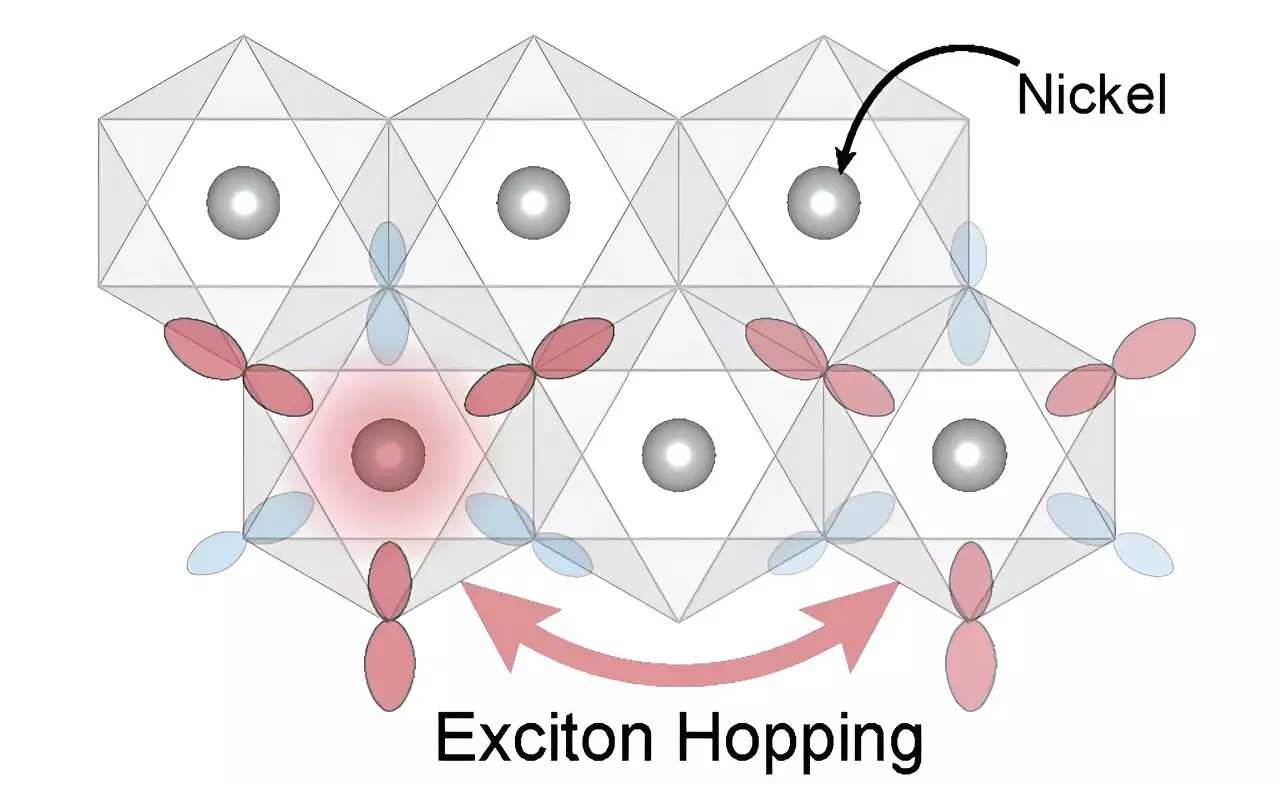The exploration of exotic particles in ultrathin materials is a bold frontier that has captivated physicists and engineers alike. Recent research led by MIT physicists delves into a unique class of magnetic materials known as nickel dihalides. These materials, comprising iron atoms sandwiched between halogen counterparts, have demonstrated remarkable magnetic phenomena despite their simple structures. This new insight offers the potential for transformative applications in electronics and quantum computing, which thrive on advanced material properties and behaviors.
The excitement surrounding nickel dihalides lies in their atomic thinness, providing a playground for studying the fundamental interactions of particles at a nanoscale. This research could redefine our understanding of magnetism originating from two-dimensional layers, revealing complexities previously hidden within bulk materials. The implications for technology are immense, particularly as the world increasingly seeks to innovate within the realm of nanotechnology.
Revolutionizing Research Techniques with RIXS
At the core of this investigation is the innovative technique of resonant inelastic X-ray scattering (RIXS), a powerful tool that allows researchers to probe materials at a fundamental level. This advanced method, available at select institutions like the National Synchrotron Light Source II in Brookhaven National Laboratory, serves as the research vessel that uncovers the microscopic origins of exotic particles such as excitons. Traditionally, studying these quasiparticles has proven challenging, but the application of RIXS illustrates the evolution of experimental techniques in modern physics.
Riccardo Comin, a leading physicist in this study, emphasizes the significance of RIXS in unraveling the magnetic properties of nickel dihalides. The capability to visualize and measure exciton behaviors marks a watershed moment in the examination of magnetic two-dimensional materials. This research direction illustrates a commitment to pioneering sophisticated techniques aligned with an ever-advancing scientific understanding.
Excitons: The Intriguing Quasiparticles
The team’s discoveries center on excitons—composite particles formed by the coupling of an electron and a “hole.” This creation is catalyzed by the interaction of light with the material, demonstrating the inseparable link between electromagnetic interactions and the material’s magnetic properties. While excitons lack a net electric charge, they exhibit a unique property: spin. Spin can be likened to tiny magnetic fields that can align in various ways, resulting in different magnetic states.
What sets this research apart is the team’s investigation into how these excitons behave in nickel dihalides, particularly regarding their distinct energy levels and the conditions necessary for their creation. The ability to chemically tune these excitons by altering the halogen atoms—from chlorine to bromine to iodine—opens a path to further understanding the direct relationship between light and magnetism in these materials.
Excitons on the Move: A New Discovery
A captivating revelation from the research is that excitons do not merely remain bound to their atomic position on nickel atoms. Instead, they display remarkable mobility, “hopping” between sites throughout the crystal structure. This propensity for movement signifies a departure from conventional assumptions about excitons being static entities. The implications extend toward a deeper comprehension of how excitons interact with the magnetic properties of their environment.
Such mobility could greatly influence the development of next-generation sensors and quantum computing systems, where the manipulation of exciton dynamics could enhance efficiency and performance. By elucidating this hopping behavior, the research team lays the groundwork for future innovations in material science, potentially leading to exciting discoveries in the realms of superconductivity and magnetoresistance.
The Future of Material Science Through Collaboration
The collaborative structure of this research exemplifies the importance of interdisciplinary partnerships in scientific advancement. The involvement of physicists from various institutions underscores the need for shared resources and mutual knowledge exchanges in complex investigations like these. Effective collaboration not only accelerates discovery but also fosters a community driven by curiosity and ingenuity.
The contributions from various researchers extend beyond MIT and Brookhaven, incorporating insights from institutions across the globe. This collective effort is a testament to the interconnected nature of modern science, where breakthroughs hinge on the amalgamation of expertise and cutting-edge techniques.
The findings surrounding nickel dihalides and excitons pave the way for new explorations in magnetism and material science. As researchers continue to peel back the layers of complexity inherent in these ultrathin materials, the path toward groundbreaking technological advancements opens wider—standing as a beacon of promise for the future of quantum electronics and beyond.


Leave a Reply